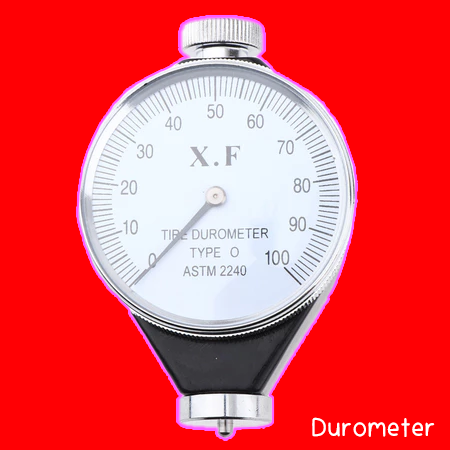Durometers or hardness testers are instruments used to measure the hardness of materials such as rubber, plastics, and metals to assess and control the properties of the materials to meet the specifications. Hardness measurement helps to ensure the quality and usability of the materials.
Types of Durometers
1. Shore Durometers
- Shore A is used for soft and flexible materials such as rubber and soft plastics, such as 30A, 60A.
- Shore D is used for harder materials such as hard plastics and harder materials, such as 70D, 90D.
2. Rockwell Durometers
- Used to measure the hardness of metallic materials by testing with force and measuring the depth of the dimples.
3. Vickers Durometers
- Uses solid diamond indentation to measure the hardness of high-hard materials such as metals.
4. Knoop Durometers
- Uses a unique solid diamond indentation to measure the hardness of high-hard materials such as ceramics.

How to use Durometers
1. Hardness testing
- Use pressure or force to create a dimple on the material and measure the size or depth of the dimples.
2. Reading
- Read the results from the display of the hardness tester. Which will be different units of measurement depending on the type of meter.
3. Calibration and maintenance
- Calibration and maintenance are important to ensure the accuracy of the meter.
Advantages and limitationsAdvantages of Durometers- Accuracy Measures hardness accurately and reliably.
- Wide range of applications Can be used with a variety of materials such as rubber, plastics, and metals.
Limitations- Sample preparation The hardness of materials can be affected by improper sample preparation.
- Calibration Requires regular calibration and maintenance.
Applications- In the rubber and plastics industry, it is used for quality control and product development.
- In metal manufacturing, it is used to test the properties of metals and hard materials.
- In laboratories, it is used in research and development to measure the properties of materials.


